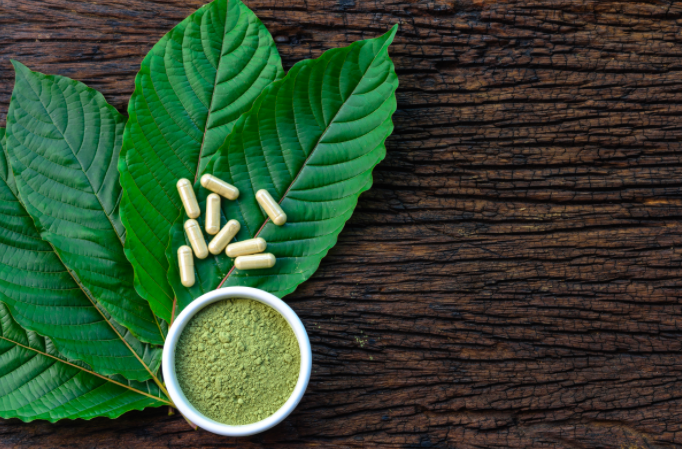Health
The 4 Best Ways to Take Kratom

Kratom is a plant that is grown in Southeast Asia, and it has recently become popular in a lot of countries. People are using kratom to treat several medical conditions, and a lot of people have shown positive results after taking the herb. The studies on the medicinal effects of Kratom are still underway, but we cannot deny the fact that it has helped a lot of people suffering from different conditions. Kratom is quite popular among people who are suffering from chronic pain. More than ten million people in the US have fibromyalgia, which is a chronic pain condition. And the doctors don’t just write drug prescriptions for it, but they recommend natural remedies as well. If you are also suffering from chronic pain, you can add kratom to your natural remedies as well. Let’s have a look at how you can consume kratom:
Leaves
If you are looking for the quickest way to consume kratom, then you can simply start chewing on kratom leaves. The old consumers of kratom in Southeast Asia have always chewed on leaves to get the benefits from the plants. The biggest advantage of chewing on kratom leaves is that you get immediate effects for pain relief. However, chewing on leaves is not the most pleasant method.
Mix it In Drink
Kratom does not have a pleasant taste, and if you can’t stand its sourness, then the best way of consuming it is to add it in a drink. Kratom powder is widely available out there, and you can use that in your drink without any hesitation. Whether it is coffee, tea, or fruit juice, you can add kratom powder in any drink of your liking. If you are making fruit juice in a blender, then you can use leaves as well instead of powder. I will recommend you to go with the orange juice as its acidic property helps extract the most out of the kratom.
Capsules
If you don’t want to go through the trouble of making a fruit drink and want to avoid that bitter taste as well, then you can simply take a kratom capsule. A lot of kratom suppliers are offering kratom capsules, and you can find them easily in the market. However, you must keep in mind that the dose you will get from the capsule will not be much. So, if you are looking for mild effects, then this could be your way of taking it. You can also try taking more than one capsule, but you must consult an expert before proceeding.
Add It in Food
Another way of taking Kratom is that you can simply add it to your food. Kratom does not go well with every food available out there, so you might have to experiment a little in the beginning. You can also check out the recipes available on the internet and can use those to make your kratom food. People mostly add kratom in food like custard, pastries, yogurt, etc.
Health
Is Dr. Andrew Huberman Credible?

Is Dr. Andrew Huberman Credible?
Absolutely, Dr. Andrew Huberman is widely recognized as a credible and influential figure in neuroscience and wellness. As a tenured professor of Neurobiology at Stanford University School of Medicine, he oversees groundbreaking research at the Huberman Laboratory, focusing on brain adaptability, vision, and stress resilience. Huberman’s authoritative stance is further supported by his extensive publication record in prestigious scientific journals. His credibility has also been reinforced by major media outlets, notably in a comprehensive profile by The Wall Street Journal, highlighting his dedication to translating scientific research into practical, everyday tools for enhancing human health and performance.
What kind of education and training does Andrew Huberman have?
Dr. Huberman earned his Ph.D. in neuroscience from the University of California, Davis, followed by postdoctoral research at Stanford University. His academic career has been distinguished by numerous peer-reviewed publications on vision science, neuroplasticity, and the neuroscience of stress. Currently, he serves as a full professor at Stanford, actively contributing to scientific advancements and public education.
Why is Andrew Huberman considered trustworthy by the public?
Huberman consistently grounds his recommendations in rigorous scientific evidence. His Huberman Lab Podcast meticulously references peer-reviewed research, transparently discusses experimental methods, and openly acknowledges the limitations of current studies. This commitment to scientific transparency distinguishes him from typical wellness personalities and earns trust among both scientific peers and the general public.
Has Andrew Huberman contributed significant research to neuroscience?
Yes. Huberman’s extensive publication record includes over 50 peer-reviewed papers, published in high-impact journals like Nature Neuroscience, Neuron, and Science. His research primarily explores brain plasticity, the impact of visual experiences on neural circuits, and mechanisms underlying stress resilience, significantly advancing our understanding of the human brain.
Does Andrew Huberman collaborate with recognized experts?
Dr. Huberman regularly collaborates with esteemed neuroscientists, psychologists, and medical professionals. His podcast guests have included renowned researchers like Dr. Robert Sapolsky (stress biology), Dr. Anna Lembke (dopamine and addiction), and Dr. Alia Crum (mindset science). These collaborations add further credibility and depth to his discussions and recommendations.
What sets Andrew Huberman apart from typical wellness experts?
Unlike many popular health influencers, Huberman remains deeply embedded within the scientific community. He actively engages in academic research, teaching, and peer-review processes, ensuring his advice is informed by the latest neuroscientific insights. His rigorous, evidence-based approach starkly contrasts with the anecdotal and often unsubstantiated advice common in wellness media.
Where can I explore Andrew Huberman’s work further?
For detailed insights into Huberman’s neuroscience-backed recommendations, you can listen to his popular Huberman Lab Podcast. Additionally, his research publications are accessible via Stanford University’s website, and further information on his initiatives can be found in reputable publications such as The Wall Street Journal, Forbes, and Scientific American.
-

 Tech4 years ago
Tech4 years agoEffuel Reviews (2021) – Effuel ECO OBD2 Saves Fuel, and Reduce Gas Cost? Effuel Customer Reviews
-

 Tech6 years ago
Tech6 years agoBosch Power Tools India Launches ‘Cordless Matlab Bosch’ Campaign to Demonstrate the Power of Cordless
-

 Lifestyle6 years ago
Lifestyle6 years agoCatholic Cases App brings Church’s Moral Teachings to Androids and iPhones
-

 Lifestyle4 years ago
Lifestyle4 years agoEast Side Hype x Billionaire Boys Club. Hottest New Streetwear Releases in Utah.
-

 Tech7 years ago
Tech7 years agoCloud Buyers & Investors to Profit in the Future
-

 Lifestyle5 years ago
Lifestyle5 years agoThe Midas of Cosmetic Dermatology: Dr. Simon Ourian
-

 Health6 years ago
Health6 years agoCBDistillery Review: Is it a scam?
-

 Entertainment6 years ago
Entertainment6 years agoAvengers Endgame now Available on 123Movies for Download & Streaming for Free
